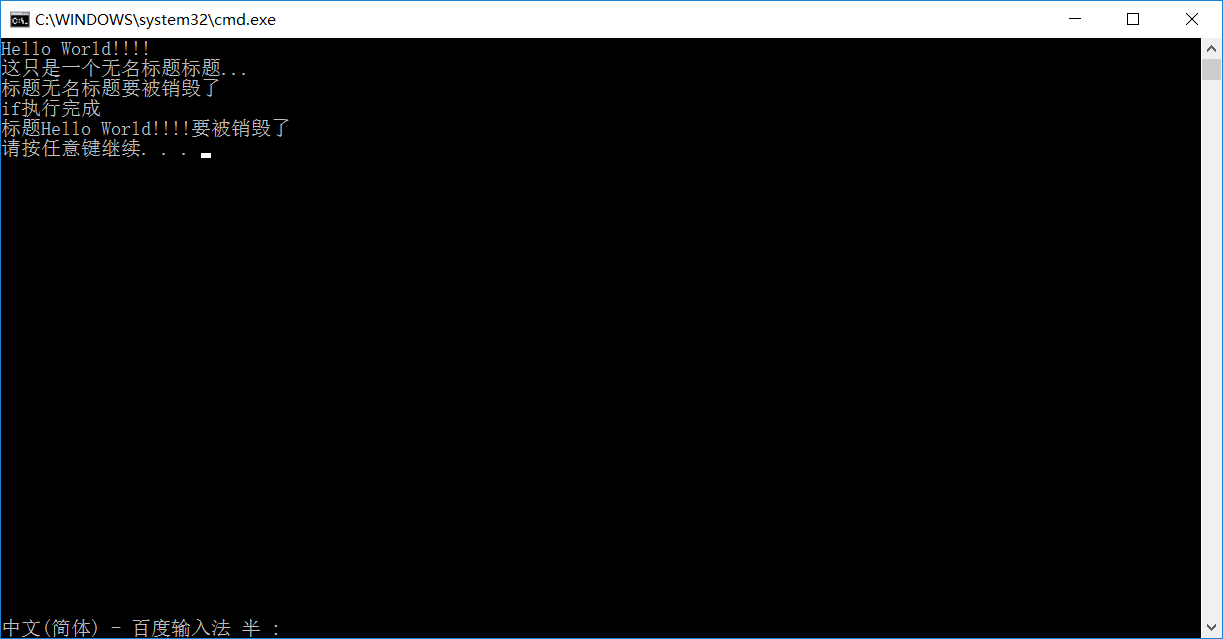1:析构函数的名称标识符就是在类名标识符前面加“~”。例如:
~CPerson();
2:实例代码:
(1)title.h

#include <string>//title是一个类,此为构造了一个类 #include <iostream> using std::string; class title{ public: title(string str);//这是一个构造函数 title();//这是一个无参构造函数 ~title();//这就是一个析构函数,执行的是收尾工作。 string m_str;//成员变量 };
(2)title.cpp

#include "stdafx.h" #include <iostream> #include "title.h" using std::cout; using std::endl; title::title(string str) { m_str = str; cout<<str<<endl; } title::title()//此为空构造函数,当未定义构造函数时,编译器就会自动调用此函数 { m_str = "无名标题"; cout<<"这只是一个无名标题标题..."<<endl; } title::~title()//这是一个析构函数,当类的对象被销毁时,编译器就会调用类的析构函数。 { cout<<"标题"<<m_str<<"要被销毁了"<<endl; }
(3)main.cpp

// 7.3.cpp : 定义控制台应用程序的入口点。 // #include "stdafx.h" #include "title.h" #include <iostream> using std::cout; using std::endl; int main() { string str("Hello World!!!!"); title out(str); if (true) { title t; } cout << "if执行完成" << endl; return 0; }
运行结果:

